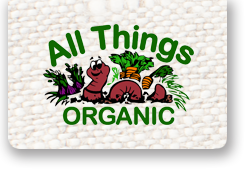Worm Bin Setup
Worm Composting
If you’re buying a worm bin for the first time, it’s a good idea to get your worm bin in advance of your worms, so you can select the right location in your home and set up the bin according to the manufacturer’s instructions. Make sure you have a ready supply of food waste, dry shredded paper and moistened coconut coir to help establish your bed foundation. Most worm bins are equipped with coconut coir, so all you’ll need to do is soak your coir block in an ice cream bucket so that it is as damp as a wrung-out sponge when your worms arrive. If you have an outdoor composter or if you do outdoor composting, you may want to add a large handful of active compost to your worm bin to help jump-start the composting process. Please note, this is not a requirement; if you have no access to active compost your worms will do fine in their new bed of moistened coir.
Bedding
Bedding for a worm bin consists of any light organic material that’s high in carbon, which helps to keep moisture in the bin and protects the worms from drying out. Dry shredded paper adds air, which is a vital component to a healthy worm bin system; it also serves as an additional food for the worms. When added in the right combination with fruit and veggie waste, bedding encourages healthy bacteria/microfauna growth, and works sybiotically with your worms to produce a healthy, productive, balanced environment. Newspaper is one of the most common bedding material available. Most newspaper is printed with vegetable-based inks so as long as you shred newsprint only and not the shiny flyers, you will always have a steady supply of paper for your bed.
All Things Organic provides our customers with the ultimate worm bed material, consisting of pulverized newsprint, cardboard and bits of straw. For more information, please visit our ATO Store.
Other bedding material that is good for your worm bin includes:
- shredded (ground-up) cardboard
- shredded leaves (from a low-traffic area)
- shredded office paper
- shredded paper towels
- coir (shredded coconut husk fiber)
- aged manure from any vegetable-eating animal (rabbits, horses, cows, llamas, etc.) NOTE: Make sure that you do not use manure that contains de-worming medication, which could kill your worms!
You can either shred your paper manually in about 1" wide strips or you can use a paper shredder – cross-cut shredders work best. Many worm bin manufacturers and vendors recommend wetting your paper when you first set up your worm bin. We DO NOT recommend this method. Your worms will receive all the moisture they need from the food you will be feeding them. You will also find that the paper bedding becomes moist on its own, as the worms move around in their new home and begin processing food waste.


